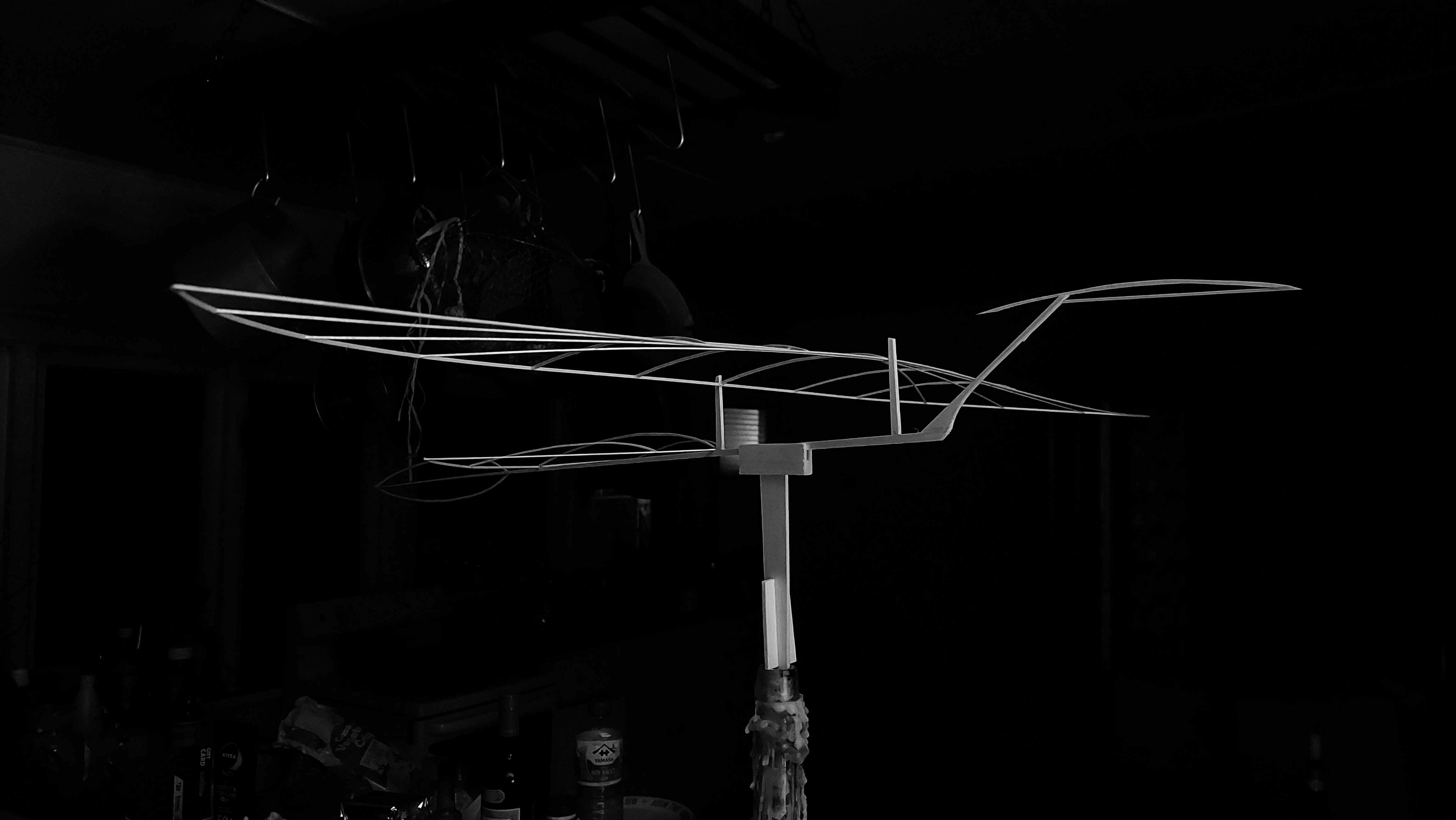Hello all.
I've only just discovered the world of model aircraft after stumbling across an F1D video by chance on youtube. I think it was the Flitetest interview with Joshua Finn. I was captivated by the grace and restraint of the building process. This was two weeks ago and I've been trying my hand at it since, just teaching myself about the materials. I rushed out and bought some balsa wood and a tube of glue. Here is my first attempt at building a frame from scratch. I based the design on a white heron I saw on the river by my house, here in New Zealand. I wanted the centre of the main wing to be rigid and the tips to be flexible, which is why I designed the laterals to bisect the ribs for strength and then to have an unreinforced space toward the tip. I'm sure it wouldn't fly, but it was very fun to apply what I've managed to learn these last two weeks anyhow.
I've been looking for resources/info/communities this last week and hopefully i have found one here.
Anyhow, this is all just to say hello and I look forward to learning more about the world of flight. Seems limitless.



I've only just discovered the world of model aircraft after stumbling across an F1D video by chance on youtube. I think it was the Flitetest interview with Joshua Finn. I was captivated by the grace and restraint of the building process. This was two weeks ago and I've been trying my hand at it since, just teaching myself about the materials. I rushed out and bought some balsa wood and a tube of glue. Here is my first attempt at building a frame from scratch. I based the design on a white heron I saw on the river by my house, here in New Zealand. I wanted the centre of the main wing to be rigid and the tips to be flexible, which is why I designed the laterals to bisect the ribs for strength and then to have an unreinforced space toward the tip. I'm sure it wouldn't fly, but it was very fun to apply what I've managed to learn these last two weeks anyhow.
I've been looking for resources/info/communities this last week and hopefully i have found one here.
Anyhow, this is all just to say hello and I look forward to learning more about the world of flight. Seems limitless.



Last edited:






